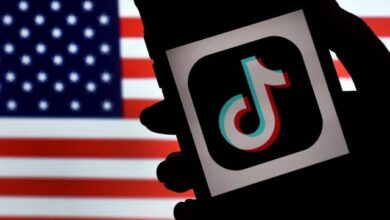Twitter, Threads, And The Beauty Of Competition

With a promise of being user-friendly, the advent of Mark Zuckerberg,s Threads may jolt competition with Twitter and other similar social media platforms.
Threads hit 100 million sign-ons within five days of launch, beating bookmakers’ predictions. Its fastest growth was recorded after ChatGPT hit 100 million in two months.
Threads is riding on the loopholes created by Elon Musk,s Twitter when limits of how many tweets can be read or posted by users per day. Besides, the new Twitter business models of subscriptions didn’t go well with users and it limits how many people could sign on and cope with bottlenecks created by Musk.
Threads walks on familiar terrains created by Facebook, and Instagram that have formidable members already, and the idea of interoperability adds to the beauty of Threads as Facebookers and Instagrammers may switch between platforms seamlessly.
So while Twitter remains a one-Way traffic, many roads lead to Threads.
Although Threads appears flexible, it’s not clear how far Zuckerberg will run with it.
Threads arrives at a particularly weak moment for Twitter. Musk’s recent announcement that free Twitter accounts would, temporarily, only be able to view 600 tweets per day was met with derision. Such moves will likely further hurt advertising on the platform—worsening a crisis that’s been ongoing throughout Musk’s tenure.
Technical troubles at Twitter converging with a slow news week have set the stage for Threads. “Suddenly, you have something improbable: Meta has gotten into microblogging and people are actually digging it,” according to John Wihbey, a professor in the School of Journalism and Media Innovation at Northeastern University who has worked as a contracted consultant for Twitter.
Threads, the latest of Meta’s copycat innovations, faces a long slog in its bid to topple Twitter as the microblogging platform of choice. It has jumped into a feeding frenzy for users that have grown increasingly heated since Musk bought the platform last year. But Threads comes with big potential, thanks to its polished tech, built-in user base, and a reputation for better moderation that’s likely to please big-money advertisers.
Threads, which is closely linked to Instagram but is actually a different app, has a major advantage over other Twitter copycats—it already has a huge potential pool of users on Instagram, and those people can choose to follow accounts they already follow on Instagram as they come onto Threads.
After months of chaos at Twitter, many people are looking for something different—but most have yet to commit to a single platform, which is good news for Threads. “They’ve definitely got a fighting chance if all of their protections for communities and individuals are firmly in place,” says Tama Leaver, a professor of internet studies at Curtin University in Australia. “If Threads can displace Twitter’s current toxicity, it may well steal Musk’s crown.”
And people don’t generally seek out Twitter and Instagram to meet the same needs. Twitter allows some nudity, while Instagram has barred it. Instagram is, at times, about aesthetics and positivity and personal updates—though it’s notorious for veering into toxic positivity and overly edited and carefully selected images.
Twitter’s brand lies in snark, memes, and breaking news. It’s doubtful those two energies can merge seamlessly. “My take is it’s less about text versus photos and videos and more about what public conversations you want to have,” Adam Mosseri wrote in a Thread about the platform’s purpose.
With the backing of Meta, Threads has a team of engineers that volunteer-run networks like Mastodon can’t rival. People can also post Threads directly to their Instagram stories.
And, according to a post recently from Instagram head Mosseri, Threads will eventually have support for ActivityPub, the protocol behind Mastodon, which would let people take their followers to another service if they leave Threads or the app ever shuts down.
Threads can’t do all that Twitter can—yet. People need an Instagram account to sign up, and Threads is not available in the European Union, which has strict privacy standards that the app may not meet.
The feed defaults to a mix of accounts people follow and a slurry of posts selected by an algorithm; there’s no direct messaging feature; and the feed’s order is algorithmic, not chronological.
Threads don’t have a trending topics section, and the search feature seems to only bring up accounts, not specific topics or posts, which makes it initially less appealing for anyone following big news events. There are also no ads—yet.
But Threads had a mostly smooth launch and largely positive reception, aside from a slight hiccup when Zuckerberg’s own Threads failed to load at some point.
Still, microblogging remains a risky bet, as social platforms focusing on it haven’t been consistently profitable. At the same time, Threads may boost Meta’s brand as Twitter’s reputation falters. And it’s a chance to capitalize on advertisers that have ditched Twitter.
Threads might never be Twitter—but it might be a friendlier place for conversations. For now, most of the posts on Threads are about the platform itself. But it will have to hold attention past its launch to avoid being shuffled off into the Meta graveyard of failed imitators.
But Meta has a mixed history when it comes to cannibalizing its competitors. Instagram Reels leveraged some of TikTok’s popularity, and Instagram Stories, a Snapchat copy, has become a key part of the app—although neither has killed the rival networks, which remain two of Meta’s top competitors for attention among younger generations.
It looks like Threads might be the shiny Twitter rival of the day, but Meta has an unsavory record with projects outside its core apps. Its all-in bet on the metaverse hasn’t yielded the immersive world Zuckerberg envisioned, even when it added legs.
In the past year alone, Meta has killed other offshoots, including Super (a Cameo copy), Facebook live shopping, and Neighborhoods (a Nextdoor clone). A podcast push also packed up shop earlier in 2022. And Meta followed Twitter in announcing a paid subscription tier that would come with verification and better features earlier this year.
What’s the fastest way to grow a new social network? It turns out converting your existing 1 billion+ users over to the new thing isn’t a bad idea.
How precedented is 100 million users in less than a week?
Back in February, ChatGPT set a new record for the fastest-growing consumer application after crossing the 100 million threshold within two months of launching.
“In 20 years following the internet space, we cannot recall a faster ramp in a consumer internet app,” a UBS analyst wrote at the time.
For comparison, Instagram reached the same milestone after two and a half years about a decade ago.
The landscape is obviously different in this decade. TikTok only took nine months to hit 100 million users. But the appetite for a more mainstream alternative to Twitter is especially strong right now.
Still, virtually no one saw the immediate success of Threads coming. Just a month ago, there were thoughts Instagram’s “Project 92” app just looked like the comments section from Instagram.
There were also thoughts it was a no-brainer move that let Meta take advantage of the ActivityPub/Fediverse movement. Now it seems like Meta could have never promised to support interfacing with Mastodon and other federated Twitter alternatives.
Of course, the next challenge for the folks at Instagram is to make Threads stick. The 1.0 version of the app is especially bare bones. It’s also easier to have users sign up than it is to have users stick around and engage.
Apple has joined the fray on Threads, though, which signals this thing might be more than a small tight-knit community. Via the App Store, Threads is available everywhere except the EU.





